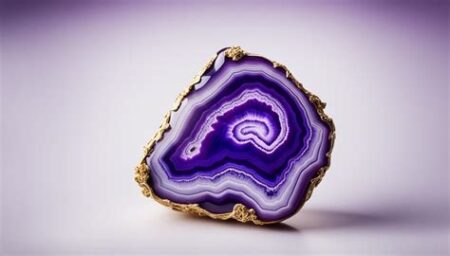Unraveling the Enigmatic Nature of Aquatic Crystals
For centuries, humans have been enthralled by the allure of crystals, marveling at their shimmering surfaces and intriguing properties. However, there lies a hidden realm of crystals, concealed beneath the azure depths of oceans and lakes – aquatic crystals. Possessing unique characteristics and immense scientific potential, these enigmatic gems invite us on a captivating journey into the depths of nature’s wonders.

The Formation of Aquatic Crystals
Aquatic crystals come to life within the watery depths as mineral ions dissolved in seawater or freshwater combine and arrange themselves into regular, geometric structures. The process of crystallization is governed by numerous factors, including temperature, pressure, salinity, and the presence of organic matter.
Three Principal Types of Crystal Growth Mechanisms
- Evaporation-driven crystallization: Occurs when water evaporates, leaving behind concentrated mineral ions that eventually form crystals.
- Precipitation-induced crystallization: Occurs when chemical reactions or changes in environmental conditions cause mineral ions to precipitate out of solution, forming crystals.
- Biological crystallization: Facilitated by marine organisms such as mollusks, corals, and algae, which secrete minerals to build their shells or skeletons.
The Colors and Composition of Aquatic Crystals
The spectrum of colors exhibited by aquatic crystals is as diverse as the marine environment itself. These vibrant hues arise from trace elements or impurities incorporated into the crystal structure. For instance, iron impurities endow crystals with reddish hues, while copper or manganese lends blue or green colors.
The chemical composition of aquatic crystals varies widely depending on the specific mineral salts present in the surrounding water body. Common mineral groups include:
- Calcite (calcium carbonate)
- Aragonite (calcium carbonate)
- Gypsum (calcium sulfate)
- Halite (sodium chloride)
The Significance of Aquatic Crystals in the Marine Ecosystem
Aquatic crystals play vital roles in the marine ecosystem as habitat, food sources, and nutrient reservoirs.
- Habitat provision: Crystals provide anchorage and shelter for a variety of marine organisms, including fish, algae, and invertebrates.
- Food source: Certain microorganisms, such as foraminifera, feed on crystals as their primary source of nutrition.
- Nutrient reservoir: Crystals accumulate nutrients such as phosphorus and nitrogen, which can be released into the surrounding water when needed by other organisms.
Scientific Applications of Aquatic Crystals
Beyond their aesthetic beauty and ecological significance, aquatic crystals have captured the attention of scientists for their potential applications in various fields.
Biomedicine: Some aquatic crystals, such as calcite and aragonite, have shown promise in bone regeneration and tissue engineering.
Environmental science: Aquatic crystals serve as indicators of water quality and environmental changes, as their composition and morphology reflect the health of the surrounding ecosystem.
Material science: Researchers are exploring the unique properties of aquatic crystals for the development of advanced materials with applications in electronics, energy storage, and catalysis.
Agriculture: Aquatic crystals have been employed as soil amendments, providing essential minerals and improving fertility.
Tips and Tricks for Exploring Aquatic Crystals
Embarking on a journey to explore aquatic crystals can be an exhilarating experience. Here are some tips to enhance your exploration:
- Observe the marine environment: Pay attention to areas where crystals are likely to form, such as shallow waters near coral reefs or hydrothermal vents.
- Use underwater gear: Snorkeling or diving equipment will allow you to venture into the watery depths and observe crystals in their natural habitat.
- Collect samples responsibly: Only collect small samples for scientific or educational purposes, and avoid damaging the marine ecosystem.
- Clean and preserve samples: Clean aquatic crystals with freshwater to remove salt and debris, and preserve them in a suitable storage solution to maintain their integrity.
Common Mistakes to Avoid
When exploring aquatic crystals, it’s essential to avoid certain common mistakes:
- Over-collecting: Excessive sample collection can disrupt the marine ecosystem and deplete crystal resources.
- Damaging the environment: Respect the fragility of the marine environment and avoid actions that could cause harm to marine organisms or habitats.
- Ignoring safety precautions: Exercise caution when exploring underwater environments and always prioritize safety.
- Misidentification: Carefully observe and identify aquatic crystals based on their morphology, color, and luster to avoid misinterpretations.
A Step-by-Step Approach to Identifying Aquatic Crystals
- Observe the crystal’s external features: Note its shape, size, color, and any visible inclusions or imperfections.
- Test the crystal’s hardness: Gently scratch the crystal with a fingernail or a streak plate to determine its relative hardness.
- Examine the crystal’s cleavage and fracture patterns: Note how the crystal breaks or cleaves, as it can provide clues about its mineral composition.
- Conduct chemical tests: Use simple chemical tests, such as acid tests or flame tests, to identify the presence of specific elements or compounds within the crystal.
- Compare the crystal’s properties to reference materials: Refer to field guides, books, or online databases to compare the crystal’s characteristics with known mineral species.
Tables for Comprehensive Understanding
Table 1: Composition and Color of Common Aquatic Crystals
| Mineral Group | Chemical Composition | Color |
|---|---|---|
| Calcite | Calcium carbonate | White, yellow, orange, red, green, blue |
| Aragonite | Calcium carbonate | White, yellow, green, blue, purple |
| Gypsum | Calcium sulfate | White, gray, pink, yellow |
| Halite | Sodium chloride | White, transparent |
Table 2: Location and Formation Mechanisms of Aquatic Crystals
| Location | Formation Mechanism |
|---|---|
| Shallow waters near coral reefs | Evaporation-driven crystallization |
| Underwater caves and tunnels | Precipitation-induced crystallization |
| Hydrothermal vents | Biological crystallization |
| Seafloor sediments | Burial and compaction |
Table 3: Ecological Roles of Aquatic Crystals
| Role | Benefit |
|---|---|
| Habitat provision | Anchorage and shelter for marine organisms |
| Food source | Nutrient source for microorganisms |
| Nutrient reservoir | Stores nutrients and releases them when needed |
| Carbonate buffering | Neutralizes acidic waters |
Table 4: Potential Applications of Aquatic Crystals
| Field | Application |
|---|---|
| Biomedicine | Bone regeneration, tissue engineering |
| Environmental science | Water quality indicators, environmental monitoring |
| Material science | Advanced materials for electronics, energy storage, catalysis |
| Agriculture | Soil amendments, fertility enhancement |
Conclusion
Aquatic crystals stand as enigmatic treasures concealed within the watery depths, embodying the boundless creativity of nature. Their formation, properties, and ecological significance have captivated scientists and nature enthusiasts alike. As we delve deeper into the world of aquatic crystals, our understanding of marine ecosystems and the potential applications of these remarkable formations will continue to expand, revealing the profound interconnections that shape our planet. With a keen eye, a respectful approach, and a thirst for knowledge, we can unlock the secrets of aquatic crystals and harness their power for the betterment of humankind and the conservation of our oceans.




























